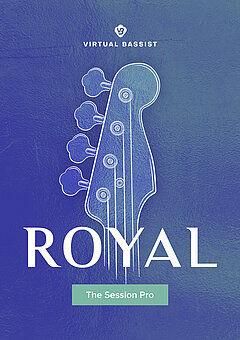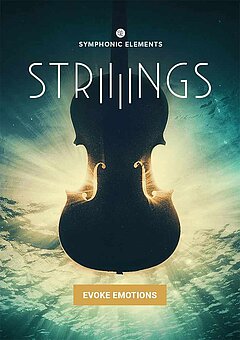How to Make Pop Ballads
A detailed guide to creating emotional pop ballads that get your fans hooked, complete with steps for intros, bass lines, mixing, and vocals
APRIL 18TH, 2021
Creating an intro and laying the foundation
The go-to instrument for laying down the chords is often piano, whether through held chords or arpeggios — there’s no harm in starting there if you’re not sure what else to use! Piano has always been a staple and it works very well. You can also use acoustic guitar, clean electric guitar, synth pads, or anything else that feels soft and soothing. As long as you keep a laid-back vibe and leave room in the mix for the vocals, you’ll be good to go!
Here’s a great quick start solution: create a simple, quick intro using whichever instrument you choose, then bring the vocals in after 4 bars while continuing to play the same chords underneath. Adele’s Hello opens this way, as do many other pop ballads. You can get more sophisticated, but there’s no need to overcomplicate what’s already working with pop music — it’s popular because it’s accessible, so with this genre in particular you can often get away with using some templates to help the writing process.
When it feels appropriate, bring in percussion — use your ear and compare your song with other pop ballads to find the optimal spot. If you’ve read our How to Make Modern Pop Drums article, the approach for ballads is going to be a little different; not only are ballads slower, but you also don’t want to make the drums too punchy and completely cut through the mix. Be gentle with them, and keep the focus on the vibe. Percussion is a gentle accent to a great pop ballad! Other than this, however, you can comfortably follow along with the article and be able to make excellent pop ballad drums.
Writing the perfect bass line every time
Pop bass lines deserve special love in ballads. You can typically get away with using only long, held notes in pop ballad bass lines, especially if you’re mainly using an electronic palette (acoustic is trickier for this) — but starting spicing things up as soon as you can! Many other producers are doing the bare minimum, so making even a moderate effort will help your music to stand out.
An easy first step is to add a grooving rhythm to each note. You don’t have to add more different notes, and spreading the rhythm around to different instruments gets the entire song in sync quickly. Virtual Bassist ROYAL 2 is a bass VST with tons of presets that allow you to achieve this right out of the box — normally it would require recording an excellent bassist to make this convincing, but ROYAL 2 is filled with modern pop samples and designed to give you tons of options for your bass. This is especially true when you need something mellow that can handle subtle performance techniques — a famous example of this is Ed Sheeran’s Photograph:
However, pop ballads take many forms; the farther you move toward R&B and soul, the more you need to lead on snappy, complex bass lines. Wish I Didn’t Miss You by Angie Stone is a perfect example. It frequently uses fifth and octave intervals with varying rhythms and note lengths.
It’s easy to get confused on exactly what style bass line to use, so let’s use a simple guide: when in doubt, match the bass line to everything else going on in the arrangement. If you’re using a complex but chill drum groove, let your bass lines reflect that. If the arrangement is mostly vocals and sparse piano chords, when the bass enters (if it does at all) it should likely be very simple. You can always break this rule if you choose, but you'll rarely go wrong with listening carefully to your mix and writing a bass line that takes on the same characteristics.
We could go into a lot more detail, but you can find most of what you need in our How to Create Bass Lines that Stick article — the info applies perfectly to pop ballads, but recall that you’ll want to focus on on creating light, easygoing bass lines that fit the context of the song (some of the tips you’ll want to adjust ever so slightly, as ballads require a lighter touch).
Vocals
For the purposes of this article, we’ll assume you already have lyrics written. The vocals should be laid-back, matching up with the vibe of the song as a whole. Beyond the actual performance, there are multiple production techniques you can use to make it sound smoother and more professional.
A big one is how you handle breaths — for ballads, you usually want to bring them to the front of the mix. This immediately makes things feel more intimate, as though you’re in the same room as the vocalist. You can automate the volume manually (which is rather time consuming) or use a specialized plugin like Waves’ DeBreath to isolate the breaths from the performance and increase their volume as you choose. If you don’t want to buy a plugin just for controlling breath noises, there are advantages to manual automation, namely more control.
You’ll also often hear long reverb on pop vocals, which contributes to their smoothness and overall laid-back feel. Often it’s a light hiss in the background that only catches higher frequencies — it doesn’t have to be much, just a tiny bit for the effect. Since vocals tend to be the focus of pop songs, it helps to give them a slight high shelf boost with an EQ to make them shine.
Production and mixing
Generally, you’ll want to mix everything around the vocals since they carry most of the emotional weight (and listeners will want to sing along!). Give them plenty of space, and don’t allow the mix to get too busy — make sure you can hear the vocals, chords, bass, kick, snare / clap, and anything else that’s important to getting the production just right. Typically, you’ll want the mix to be fairly bright — not as extreme as most EDM, but enough to give it a nice shimmer. Adjust the bass to taste, and make sure the kick is clear since that will be the primary driver behind the beat; don’t make it too punchy or super forward in the mix though, or the song will sound more aggressive than necessary.
If you want a larger-than-life sound, plan on using lots of layers in your kick and snare; by contrast, a more intimate ballad might focus only on a light acoustic kick and finger snaps. The more layers you have, the more compression you’ll want to add to glue everything together — and the more the tail of the snare will be accentuated. If you’re looking for things to layer in the chorus, try string patterns to support the rhythm and give the impression of many more instrumentalists on the song. UJAM’s STRIIIINGS is built directly from recordings deep within Hans Zimmer’s private collection, featuring tons of powerful and intimate string ensemble phrases recorded over his decades-long career. Try dropping some of its phrases in and you’ll immediately begin rounding out the entire production!
Wrapping up
Pop ballads require special attention since it’s very easy to overdo it when adding additional layers, melodies, etc. and adding clarity to rhythmic instruments like drums. Every instrument contributes to the mix, whether bass, drums, piano or others, and your job as a pop ballad producer is to bring everything into perfect balance without cluttering the production or making it sound too busy. Focus everything around supporting the lyrics, as they should carry much of the song’s emotion.
Start by building the foundation — and remember, it doesn’t need to be complicated! Some of the most successful pop ballads are little more than piano and vocals. From there, layer in additional instruments while keeping the feel relaxed. Pop ballads bring together R&B, soul, rock, and a number of other different genres, and it’s common for one of them to feel dominant; let this guide your writing and production decisions, and you’ll gradually build up a library of influences to comfortably merge into your own style.
Listen to as many different influences as possible and note their similarities and differences — and while you should keep experimenting and growing the genre, feel free to use templated song structures to get you started. Remember: if it’s working for the most successful songs on the charts, it can work for you too!
Stay up to date
Sign up and we’ll send you an e-mail with product news and helpful stuff every now and then. You may unsubscribe at any time.
Defy Limits
We develop software solutions that enable people to create, consume and interact with music.



